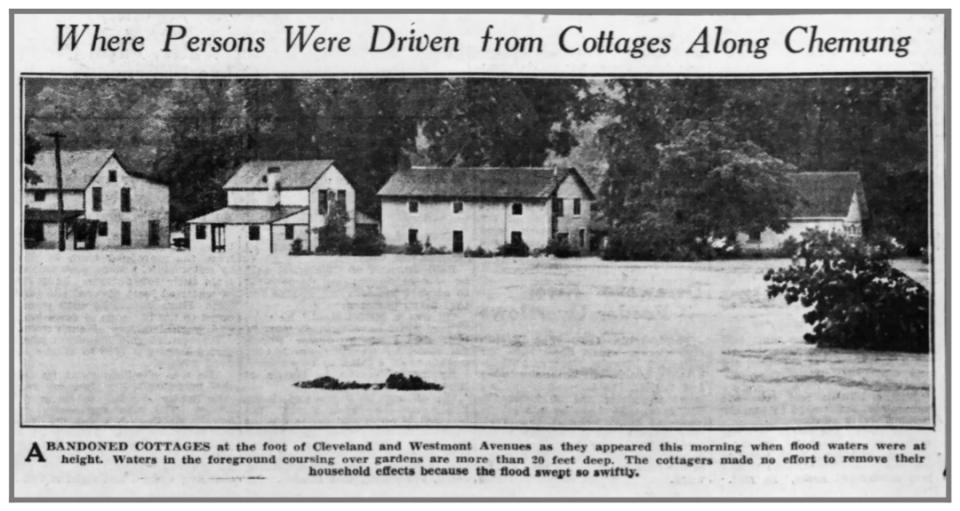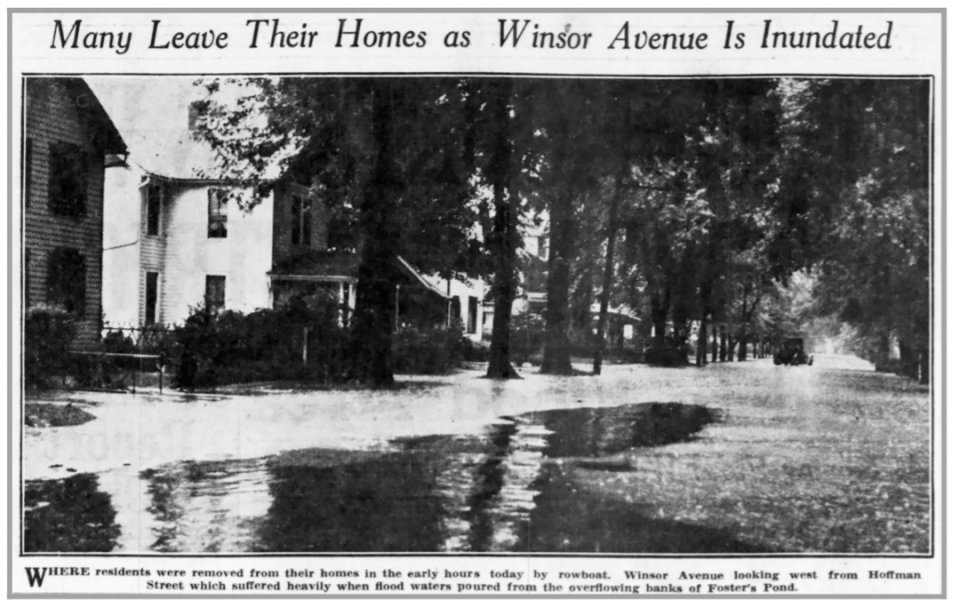'The Forgotten 1935 Flood': How Elmira area was impacted by storm that killed 37 people
Following summer 1935’s worst heatwave, cloudbursts on July 8 and 9 caused significant destruction in the Finger Lakes. The steadily rising Chemung River threatened cottages from West Elmira to Big Flats. New York State troopers advised residents and cottagers to abandon their buildings and possessions. As water inundated the campground at Clark’s Glen (on Forest Hills Drive), a band of traveling gypsies got out just in time.
Newtown Creek was one foot short of overflowing on Elmira’s Eastside at 1 p.m. Roads were impassable to Ithaca and Binghamton.
According to the Star-Gazette on July 8, there was no imminent danger to Elmira. However, “millions of gallons of water poured over the [Record] dam [in Elmira]. The south end of the dam was “lined with great cracks and was being washed away.”
The night before, at the top of Watkins Glen State Park in Watkins Glen, a deluge undermined the main span of the New York Central Railroad trestle, and it crashed into the gorge. The wall of water roared through the tunnel entrance at the bottom and washed away picnic tables and benches. The sudden rush of water uprooted whole trees and destroyed the stone firepits. The mud on Franklin Street was four feet thick. Two houses had their sides ripped away. The highway leading to Watkins Glen was washed out and, in some spots, caved in.
The wall of water hit Franklin Street with tremendous force – washing away 50 cars. Reports from Watkins Glen claimed "every home in the village was damaged, some being carried entirely away, and others torn apart."

The Pennsylvania Railroad sent an urgent request for 100 men to come and help. Also, they immediately requested 1,000 carloads of cinders to establish through service again. The Erie Railroad temporarily carried Pennsylvania Railroad passengers on its routes.
Owego storm reports in Tioga County echoed heavy damage to its downtown pavements. Raging waters swept several homes at Glenora on Seneca Lake into the lake. Hornell, Painted Post, and Bath also reported significant destruction.
The Chemung River was 17 feet at 5 a.m. on July 9. A boater in Elmira lost control of his rowboat as he tried to salvage some floating timbers in the Chemung River. He was able to climb to safety east of the Lake Street bridge.
Elmira suffered the least. Water stood knee-deep on Winsor Avenue. Newtown Creek flooded as far as East Fifth Street and as deep as seven feet. The river was forced back up Hoffman Creek to West Church St. The dike near the Brand Park pool had leaks. More minor leaks were reported on West Hudson Street. The water eventually overtopped the dike at Harmon Street and Connelly Avenue. With no real damage, water also came over on Elmira’s northside between Lake and Madison Avenue.

Hay crops in Big Flats were ruined. Cows swam through the raging currents to reach higher ground. Crop loss was estimated at $200,000.
Elmira’s WESG radio station could not broadcast because of a severed connection at Ithaca. Bridges in the Spencer-Van Etten area were out, and “automobiles were stranded in the ditches and huge boulders covered the highway.”
More Buckled bridges, destroyed homes: 1972 flood transformed Elmira, Corning into 'war zone'
Thirty-seven people died from this storm. The US Army Corps of Engineers proposed flood control projects in 1940 but the Senate voted “no” to the $30 million needed. In 1942 the proposed flood wall from downtown Elmira to Elm Street was erected. Other projects were put on hold until after World War II. In October 1945 Army Engineers expected to resume projects along the Chemung River, Newtown, Hoffman and Seeley Creeks.
On May 24, 1946 a Star-Gazette headline read, “Flood Work to Start in Two Weeks.” Four days later on May 28, 1946 Elmira suffered its second-worst flood.
-- Elmira historian Diane Janowski writes a monthly column.
This article originally appeared on Elmira Star-Gazette: How Elmira area weathered 1935 'forgotten flood' that claimed 37 lives

